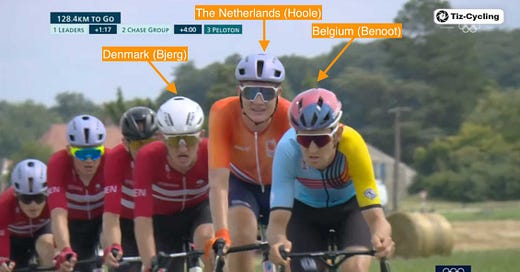Key Takeaways: 2024 Olympic Men's Road Race
Breaking down how Remco Evenepoel doubled up his Olympic gold medal haul with yet another impressive solo effort in the Men's road race
With a jaw-dropping display of pure power, speed, and a perfectly timed attack, Remco Evenepoel won the Men’s 2024 Olympic Road Race and completed a historic time trial/road race gold medal double after riding clear of an elite group of favorites on the picturesque yet chaotic Parisian city circuit. Behind him, the French duo of Valentin Madouas and Chr…
Keep reading with a 7-day free trial
Subscribe to Beyond the Peloton to keep reading this post and get 7 days of free access to the full post archives.



